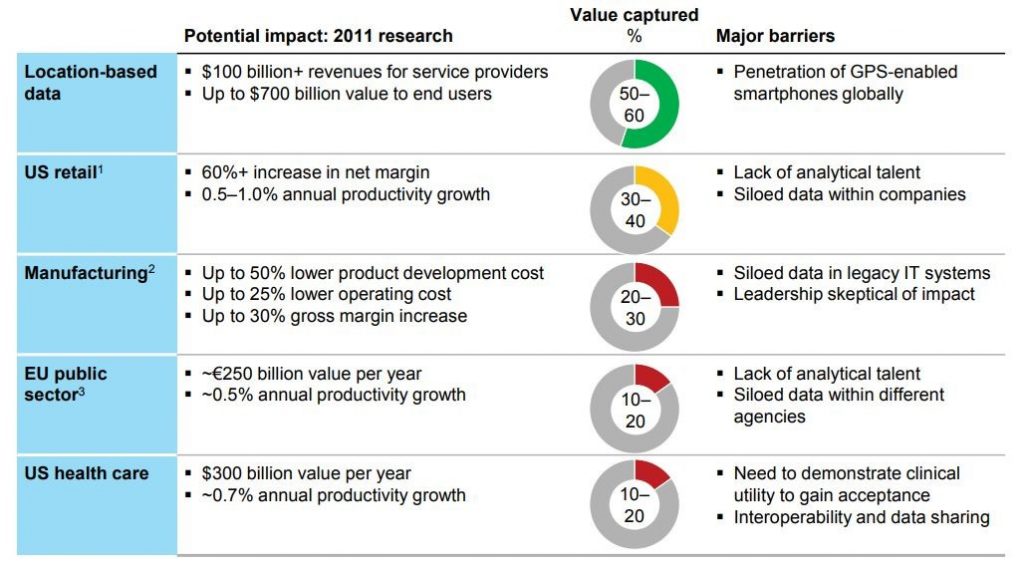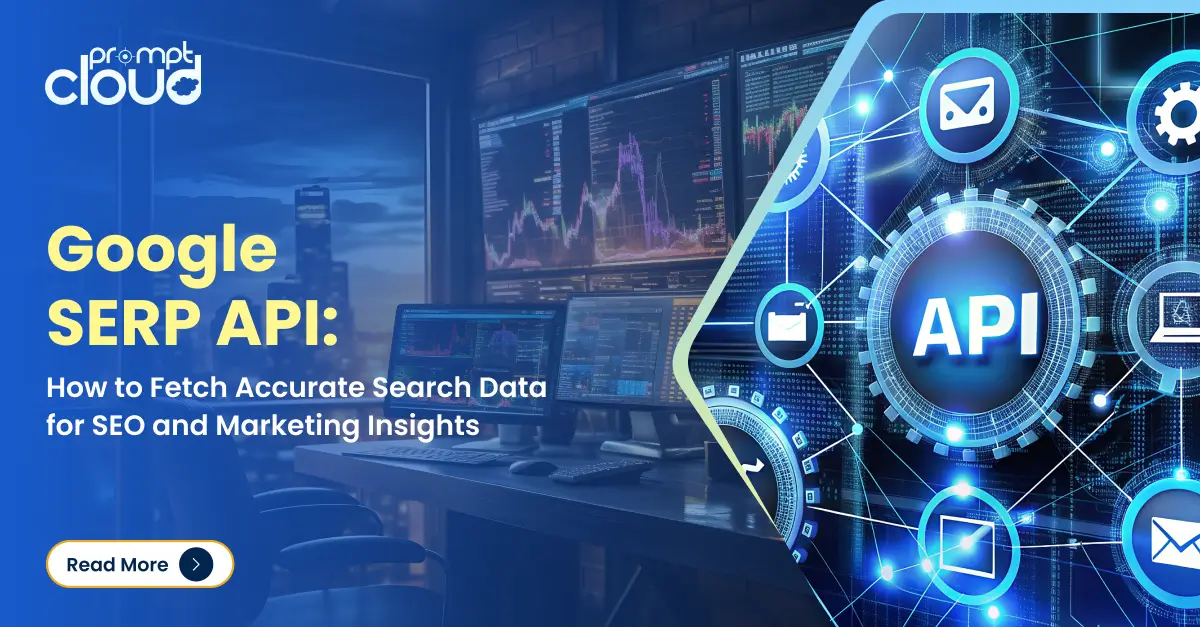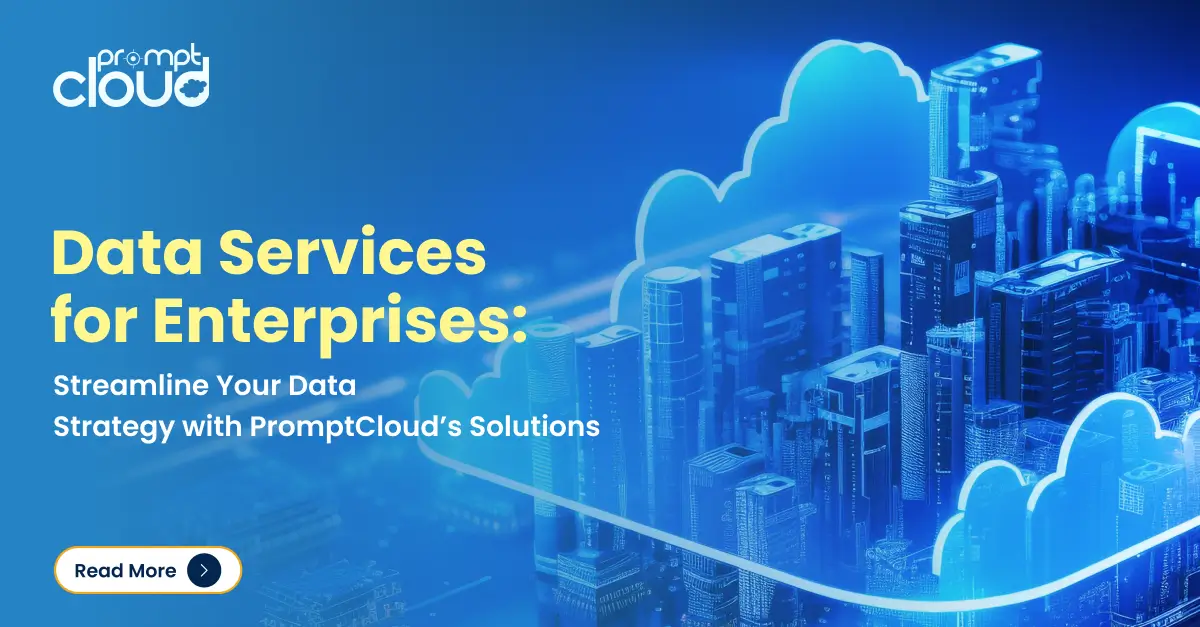Russian President Vladimir Putin earlier said, “Artificial intelligence is the future not only of Russia but of all of mankind. Whoever becomes the leader in this sphere will become the ruler of the world.”. The same applies to the present business world too. Companies from different industries have already started or are starting to consume the vast amount of data available on the web to gain actionable insights and improve decision making for their business.
Source: McKinsey Global Institute analysis
As observed in the MGI’s report, location-based services and US retail have shown the highest progress in using big data and analytics to create value. Hence it becomes all the more essential to collect and analyze data especially if you are running a business in the retail or consumer packaged goods industry. You can forecast rise and fall in particular product demand, optimize your delivery routes, predict what the top-selling product in a category is likely to be, and do much more. The possibilities of using data combined with AI & automation for business growth are endless. Here’s how companies in retail and CPG use it to their benefit.
Pricing Intelligence
It allows businesses to set prices at the exact best point where supply and demand produce the optimum revenue. Pricing intelligence when combined with dynamic pricing tools can be used to beat a competitor’s pricing and turn inventory at an accelerated pace. In March 2014, Walmart launched Savings Checker, which allowed customers to check prices and get back the difference as a Walmart Rewards eGift Card if another local retailer has any of the advertised products at a cheaper price.
Enhancing In-Store Experience
Big retail outlets have set up self-checkout kiosks that provide a seamless shopping experience to the customers. One of the major examples of this is the Amazon Go outlet in Seattle. It automatically detects what products are taken from or returned to the shelves. It tracks all the products in a virtual cart. When customers have finished shopping, they can just leave the store, and later their Amazon account is charged and a receipt is sent for the purchases that they made.
Recommending Next Best Products
Based on a customer’s purchase pattern, businesses can predict what the customer is likely to purchase next. Back in 2012, Target used data about women’s shopping habits to identify that women purchasing supplements, washcloths, and unscented lotion might mean that she is close to her due date. This helped them send better recommendations and offers on products like cribs and bibs that the customer will be needing soon.
Measuring Brand Sentiment
Listening to what customers have to say on social media is an important activity for any industry. Using big data analytics, CPG, and beauty brands can perform customer brand sentiment analysis by extracting data from sources like Twitter, Pinterest, and Facebook. These insights can be very vital and are often used to guide product development, advertising, and marketing campaigns. Brands like L’Oréal & Coca Cola collect data from multiple social media websites and apps to understand the sentiment of customer feedback posts in real-time.
Forecasting Demand
Collection of demographic and world economic data points help businesses forecast what products will have an increase in demand and accordingly make strategic decisions to improve sales. Things like weather and public holidays affect a lot in the overall sale of the product. One such example of smart demand forecasting was done by Pantene. They collaborated with the Weather Channel to collect weather data to forecast when air humidity would be at its peak, This allowed them to urge women to purchase a certain product to prevent frizz and flyaway hair. This helped Pantene to grow their sales by 10% during those months.
Fraud Detection
Fraudulent activities are one of the major problems in the retail industry. Big data analytics can help in detecting such illegal goods sales, plagiarism, and even scams. Retailers can look for suspicious or unusual activities and implement an effective fraud management strategy using internal and external data points. For example, they can build a model for a predicted number of product returns per shift; when numbers exceed a particular point for returns by-product, they can suspect that something is wrong.
Market Basket Analysis
Market basket analysis can be used to effectively design the store layout concerning product placements. Store managers can use it to adjust the location of goods inside the stores. It’s mainly used to find a correlation between the set of items a customer buys together. If it’s observed that purchasers of milk are more likely to buy coffee or sugar, then the retailer should place coffee and sugar near the milk section. They can easily derive this data from transaction history by finding combinations of products that frequently co-occur.
Conclusion
There’s an ample amount of data about the products and services, buyers and suppliers, consumer preferences that can be acquired and analyzed. The future of retail and CPG brands mainly depends on how they chose to consume this data and make the most of it. As consumers have access to information 24×7 and more options for purchasing products, businesses have a shorter decision window to act. However, with the right combination of technology and data points, they can achieve significant growth and success in near real-time.





















